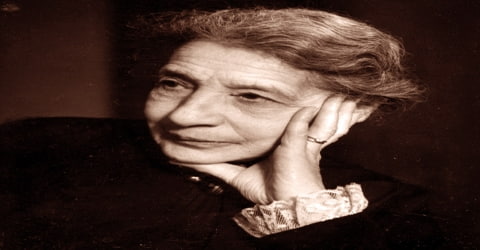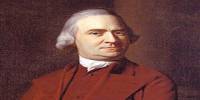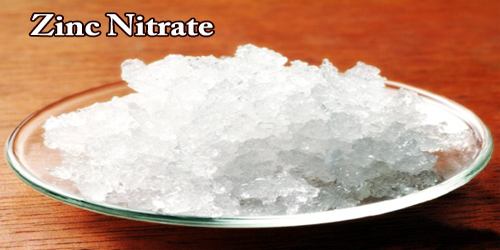Biography of Lise Meitner
Lise Meitner – Austrian-Swedish physicist.
Name: Lise Meitner
Date of Birth: 7 November 1878
Place of Birth: Vienna, Austria-Hungary
Date of Death: 27 October 1968 (aged 89)
Place of Death: Cambridge, England
Citizenship: Austria (pre-1949), Sweden (post-1949)
Known for: Nuclear fission
Fields: Physics
Early Life

Lise Meitner was born on November 7, 1878, into a relatively wealthy, cultured family in Vienna, capital of the Austro-Hungarian Empire. Her father Philipp Meitner was one of the first Jewish lawyers in Austria. She shortened her name from Elise to Lise. The birth register of Vienna’s Jewish community lists Meitner as being born on 17 November 1878, but all other documents list her date of birth as 7 November, which is what she used. As an adult, she converted to Christianity, following Lutheranism, and was baptized in 1908.
She was Austrian-born physicist who shared the Enrico Fermi Award (1966) with the chemists Otto Hahn and Fritz Strassmann for their joint research that led to the discovery of uranium fission. When she was eight years old, she kept a notebook where she recorded her experiments and observations about the world. Although it was not common for Austrian women to pursue any higher education at the time, Meitner was determined to be a scientist. She studied physics privately for a while but was finally allowed to enroll in the University of Vienna in 1901. She graduated with a Ph.D. in physics a few years later in 1906.
Meitner, Otto Hahn, and Otto Robert Frisch led the small group of scientists who first discovered nuclear fission of uranium when it absorbed an extra neutron; the results were published in early 1939. Meitner, Hahn, and Frisch understood that the fission process, which splits the atomic nucleus of uranium into two smaller nuclei, must be accompanied by an enormous release of energy. Nuclear fission is the process exploited by nuclear reactors to generate heat and, subsequently, electricity. This process is also one of the basics of nuclear weapons that were developed in the U.S. during World War II and used against Japan in 1945.
Meitner spent most of her scientific career in Berlin, Germany, where she was a physics professor and a department head at the Kaiser Wilhelm Institute; she was the first woman to become a full professor of physics in Germany. She lost these positions in the 1930s because of the anti-Jewish Nuremberg Laws of Nazi Germany, and in 1938 she fled to Sweden, where she lived for many years, ultimately becoming a Swedish citizen.
During three decades of association, she and Hahn were among the first to isolate the isotope protactinium-231 (which they named), studied nuclear isomerism and beta decay, and in the 1930s (along with Strassmann) investigated the products of neutron bombardment of uranium. Because she was Jewish, she left Nazi Germany in the summer of 1938 to settle in Sweden. After Hahn and Strassmann had demonstrated that barium appears in neutron-bombarded uranium, Meitner, with her nephew Otto Frisch, elucidated the physical characteristics of this division and in January 1939 proposed the term fission (which Frisch elicited from American biophysicist William Arnold) for the process. She retired to England in 1960. The chemical element meitnerium was named in her honor.
Childhood, Family and Educational Life
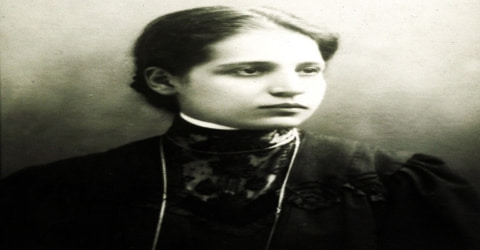
Lise Meitner was born on 7 November 1878 into a Jewish upper-middle-class family in Vienna, 2nd district (Leopoldstadt), the third of eight children. Her father was Philipp Meitner, a lawyer, and a chess master. Her mother was Hedwig Skovran, a talented amateur musician. The Meitner family were non-religious Jews. Later in life, they converted to Christian denominations. At the age of 29, Lise became a Lutheran.
Even as a child Lise was academically inclined. She enjoyed mathematics, and her father employed private tutors to help her learn more. She also enjoyed playing the piano, reading, and finding out how the world worked. Her parents encouraged all their children to think independently. Her mother told them:
“Listen to your father and me, but think for yourself.”
Recalling her parents, Lise remembered:
“…the unusual goodness of my parents, and the extraordinarily stimulating intellectual atmosphere in which my brothers and sisters and I grew up.” – LISE MEITNER (1946)
Meitner’s earliest research began at age 8 when she kept a notebook of her records underneath her pillow. Women were not allowed to attend public institutions of higher education in Vienna around 1900, but Meitner was able to achieve a private education in physics in part because of her supportive parents, and she completed in 1901 with an “externe Matura” examination at the Akademisches Gymnasium.
Meitner studied physics and went on to become the second woman to obtain a doctoral degree in physics at the University of Vienna in 1905 (her dissertation was on “heat conduction in an inhomogeneous body”). While at the University, she took her studies very seriously. Because she was unsure if she wanted to study mathematics or physics, she attended multiple lectures in both areas of study, “taking more notes than the registered students”.
In December 1905, Meitner passed her doctoral oral exam summa cum laude (the highest honor) and, in February 1906, graduated with a Ph.D. in physics.
In September 1907, Lise Meitner arrived in Berlin. She did not know it, but after almost three decades in Vienna, she had left her hometown forever. She would spend the next three decades in Berlin.
Personal Life
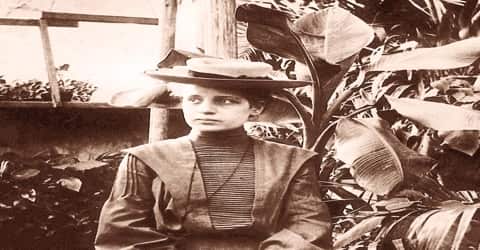
Meitner lived her life in the service of science. She never married and had no children. Her main recreation was walking she enjoyed going on very long walks. She also loved music and regularly attended concerts.
Career and Works
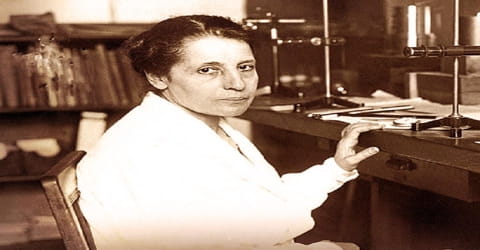
In Berlin, she began working with a chemist named Otto Hahn, and when the Kaiser Wilhelm Institute (KWI) was established, she began working there, continuing her collaboration with Hahn. After World War I, she was promoted to head of a nuclear physics section at KWI, while Hahn was leading a chemistry section. They worked together for many years and made several significant contributions to science, including discovering a number of new isotopes.
In the first part of World War I, she served as a nurse handling X-ray equipment. She returned to Berlin and her research in 1916, but not without an inner struggle. She felt in a way ashamed of wanting to continue her research efforts when thinking about the pain and suffering of the victims of war and their medical and emotional needs.
In 1917, Meitner and Hahn discovered 231-protactinium, a new isotope of the element protactinium. Until then, only very short-lived isotopes of protactinium had been discovered, making its properties hard to determine. 231-protactinium’s half-life of about 32,000 years allowed the element’s properties to be established for the first time. Further professional recognition now came Meitner’s way. Age 38, she was awarded the Berlin Academy’s Leibniz medal for the protactinium discovery and in 1918 she became the Director of Radiation Physics at the Kaiser Wilhelm Institute.
In 1922, she discovered the cause of the emission of electrons from surfaces of atoms with ‘signature’ energies, known as the Auger effect. The effect is named for Pierre Victor Auger, a French scientist who independently discovered the effect in 1923. In 1922, age 43, she was appointed as a physics lecturer at the university.
In 1926, Meitner became the first woman in Germany to assume a post of full professor in physics, at the University of Berlin. In 1935, as head of the physics department of the Kaiser Wilhelm Institute for Chemistry in Berlin-Dahlem (today the Hahn-Meitner Building of the Free University) she and Otto Hahn, the director of the KWI, undertook the so-called “transuranium research” program. This program eventually led to the unexpected discovery of nuclear fission of heavy nuclei in December 1938, half a year after she had left Berlin. She was praised by Albert Einstein as the “German Marie Curie”.
In December of 1938, Hahn finally found what he and Meitner had been looking for when he discovered the presence of barium after uranium had been bombarded with neutrons. This was surprising, and he didn’t know what to make of it. He immediately wrote to his old friend Meitner and asked for her help in explaining what had happened.
In a later appreciation Lise Meitner wrote:
The discovery of nuclear fission by Otto Hahn and Fritz Strassmann opened up a new era in human history. It seems to me that what makes the science behind this discovery so remarkable is that it was achieved by purely chemical means.
And in an interview with the West German television (ARD, 8 March 1959) Meitner said:
Otto Hahn and Fritz Strassmann were able to do this by exceptionally good chemistry, fantastically good chemistry, which was way ahead of what anyone else was capable of at that time. The Americans learned to do it later. But at that time, Hahn and Strassmann were really the only ones who could do it. And that was because they were such good chemists. Somehow they really succeeded in using chemistry to demonstrate and prove a physical process.
In their second publication on the evidence of barium (Naturwissenschaften, 10 February 1939) Hahn and Strassmann used for the first time the name Uranspaltung (uranium fission) and predicted the existence and liberation of additional neutrons during the fission process (which was proved later to be a chain reaction by Frédéric Joliot and his team). Meitner and Frisch were the first who correctly interpreted Hahn’s and Strassmann’s results as being nuclear fission, a term coined by Frisch, and published their paper in Nature. Frisch confirmed this experimentally on 13 January 1939.
Meitner was invited to work in Denmark by her friend Niels Bohr, and also received offers from Switzerland and the USA. Her physicist nephew Otto Frisch – the son of Meitner’s older sister Auguste – had been made welcome in the UK, but Meitner was reluctant to follow him because she did not speak English.
Meanwhile, the Nazis had begun enforcing a law preventing scientists from leaving Germany. Meitner was trapped. She continued working at the Institute.
Meitner left Germany with no personal possessions to speak of. Otto Hahn had given her his mother’s diamond ring to bribe border guards with, but this had not been needed. Meitner spent several weeks as Coster’s guest, before heading to Copenhagen and Niels Bohr’s Institute, and from there to a new job at the Nobel Institute for Physics in Sweden’s capital city, Stockholm.
In Sweden, Meitner was first active at Siegbahn’s Nobel Institute for Physics, and at the Swedish National Defence Research Institute (FOA) and the Royal Institute of Technology in Stockholm, where she had a laboratory and participated in research on R1, Sweden’s first nuclear reactor. In 1947, a personal position was created for her at the University College of Stockholm with the salary of a professor and funding from the Council for Atomic Research.

(Lise Meitner and Otto Hahn)
Meitner and Hahn’s radioisotope research provided them with data for a large number of high-quality research papers. They enjoyed a high reputation internationally. They were nominated ten times for the annual Nobel Prize in Chemistry or Physics, without success.
On 15 November 1945, the Royal Swedish Academy of Sciences announced that Hahn had been awarded the 1944 Nobel Prize in Chemistry for “his discovery of the fission of heavy atomic nuclei.”
At the time Meitner herself wrote in a letter, “Surely Hahn fully deserved the Nobel Prize for chemistry. There is really no doubt about it. But I believe that Otto Robert Frisch and I contributed something not insignificant to the clarification of the process of uranium fission how it originates and that it produces so much energy and that was something very remote to Hahn. In a similar vein, Carl Friedrich von Weizsäcker, Lise Meitner’s former assistant, later added that Hahn “certainly did deserve this Nobel Prize. He would have deserved it even if he had not made this discovery. But everyone recognized that the splitting of the atomic nucleus merited a Nobel Prize.“ Frisch wrote similarly in a 1955 letter.
Despite some bad feeling on both sides, Hahn gave Meitner part of the cash from his Nobel Prize. Meitner immediately donated this to Albert Einstein’s Emergency Committee of Atomic Scientists, which was promoting peaceful rather than military use of nuclear energy.
In 1946, Meitner toured the United States, where she was given celebrity status. She saw a Hollywood movie script about her life and threatened to sue anyone who made such a distorted biography. She wrote:
“It is based on the stupid newspaper story that I left Germany with the bomb in my purse, that Himmler’s people came to Dahlem (the Kaiser Wilhelm Institute) to inform me of my dismissal and more along the same lines.” – LISE MEITNER (1946)
When World War 2 ended and Meitner learned the full extent of the Nazi atrocities, she decided she never wanted to live in Germany again. She became a dual Swedish-Austrian citizen in 1949 and worked in Stockholm until retiring, age 75, in 1953.
After the war in the 1950s and 1960s, Meitner again enjoyed visiting Germany and staying with Hahn and his family for several days on different occasions, particularly on 8 March 1959, to celebrate Hahn’s 80th birthday in Göttingen, where she addressed recollections in his honor. Also, Hahn wrote in his memoirs, which were published shortly after his death in 1968, that he and Meitner had remained lifelong close friends. Even though their friendship was full of trials, arguably more so experienced by Meitner, she “never voiced anything but deep affection for Hahn.”
Awards and Honor
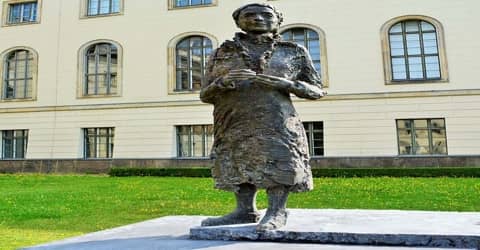
‘Statue of Meitner (Anna Franziska Schwarzbach [de], 2014), Humboldt University in Berlin’
Meitner received 21 scientific honors and awards for her work (including 5 honorary doctorates and membership of 12 academies).
In 1957 the German President Theodor Heuss awarded her the highest German order for scientists, the peace class of the Pour le Mérite.
Meitner was elected a foreign member of the Royal Swedish Academy of Sciences in 1945, and had her status changed to that of a Swedish member in 1951. Four years later she was elected a Foreign Member of the Royal Society (ForMemRS) in 1955. She was elected a Foreign Honorary Member of the American Academy of Arts and Sciences in 1960.
Other awards –
- Lieben Prize (1925)
- Max Planck Medal (1949)
- Otto Hahn Prize (1955)
- ForMemRS (1955)
- Wilhelm Exner Medal (1960)
- Enrico Fermi Award (1966)
Although she never received a Nobel Prize, Meitner was honored in a more exceptional way when element 109 was named Meitnerium in 1997. Additional naming honours are the Hahn–Meitner-Institut in Berlin, craters on the Moon and on Venus, and the main-belt asteroid 6999 Meitner.
In 2017, the Advanced Research Projects Agency-Energy in the United States named a major nuclear energy research program in her honor
Death and Legacy
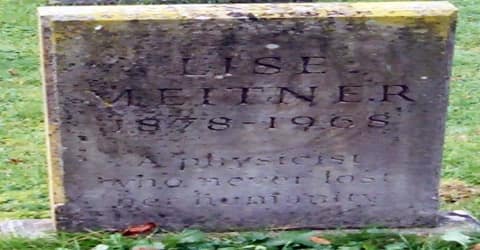
Lise Meitner died at the age of 89 in Cambridge on October 27, 1968, after being weakened by a second broken hip and a number of small strokes. She was buried in the churchyard of St James Church, Bramley, close to where her youngest brother had been buried a few years previously.
Her nephew Frisch composed the inscription on her headstone. It reads:
Lise Meitner: a physicist who never lost her humanity.
In 2000, the European Physical Society established the biannual “Lise Meitner Prize” for excellent research in nuclear science. In 2006 the “Gothenburg Lise Meitner Award” was established by the University of Gothenburg in Sweden; it is awarded annually to a scientist who has made a breakthrough in physics. In 2008, the chemical, biological, radiological, and nuclear defense school of the Austrian Armed Forces (NBC) established the Lise Meitner Award.
Information Source:
